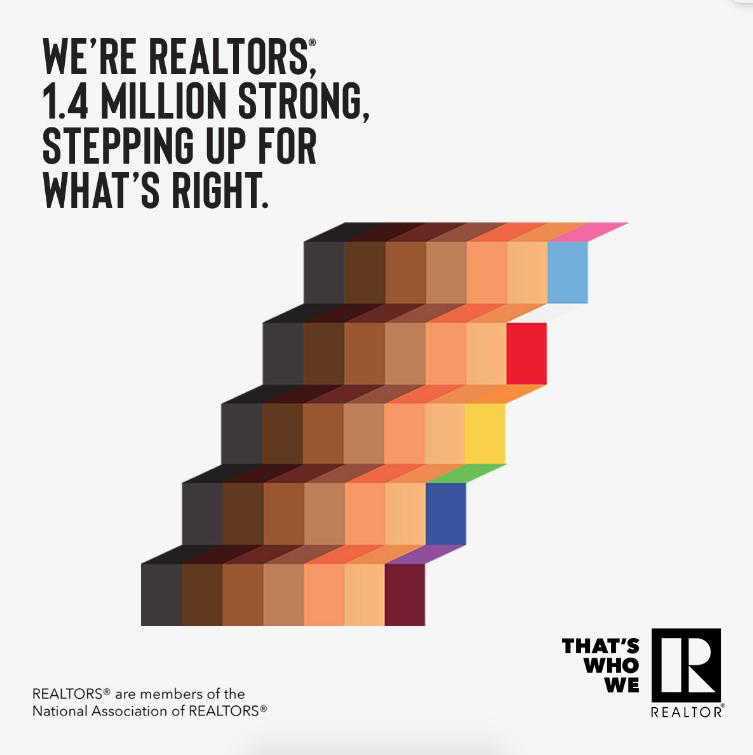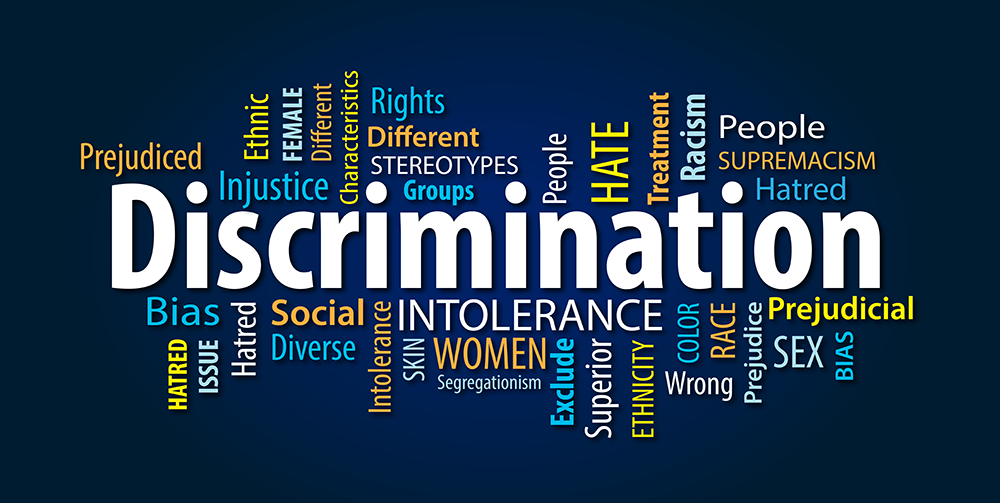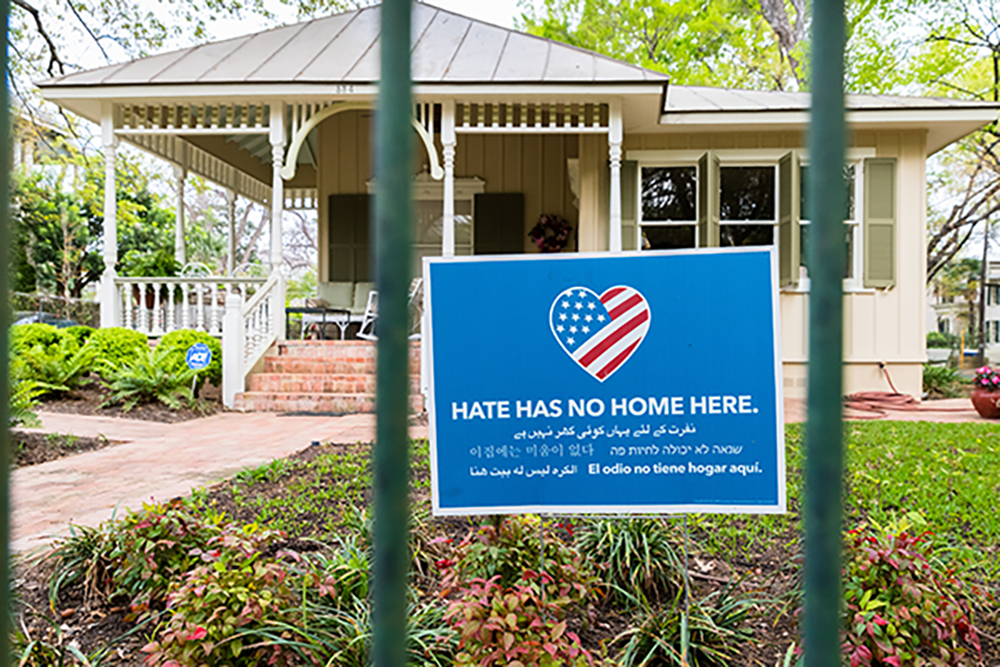The videotaped killing of George Floyd and inequities in pandemic relief have returned America’s history of racial discrimination back to center stage. Housing is connected to every aspect of American life, and that unfortunately has included housing discrimination.
NAR Takes Action to Build Equitable Housing Market
 The National Association of REALTORS® has placed a stake in the ground on fair housing practices and the Fair Housing Act. In response to the current administration’s roll back of 2015 regulations to “affirmatively further fair housing,” NAR President Vince Malta said, “The National Association of REALTORS® is disappointed that HUD has taken this step, which significantly weakens the federal government’s commitment to the goals of the Fair Housing Act (…)The changes threatened to strip away the rule’s original civil rights purpose, as mandated by the 1968 law.“
The National Association of REALTORS® has placed a stake in the ground on fair housing practices and the Fair Housing Act. In response to the current administration’s roll back of 2015 regulations to “affirmatively further fair housing,” NAR President Vince Malta said, “The National Association of REALTORS® is disappointed that HUD has taken this step, which significantly weakens the federal government’s commitment to the goals of the Fair Housing Act (…)The changes threatened to strip away the rule’s original civil rights purpose, as mandated by the 1968 law.“
NAR contends that an examination of inequality in America reveals that the racial wealth gap is primarily a housing wealth gap, with lower homeownership rates. This leaves an impact on minority communities that can last generations. But the housing gap story began long before the recent HUD decision. In fact, housing discrimination began long before the 1930’s when New Deal housing programs were created. The New Deal was a great example of structural discrimination in housing that unfairly disadvantaged African American families and other people of color.
Housing Discrimination Is an Ongoing Issue

As part of the New Deal, the Federal Housing Authority, (FHA) subsidized builders who produced housing for middle- and low-income white families with the requirement the housing not be sold to African Americans. In response to this and other tactics, the Fair Housing Act of 1968 made discrimination in housing, from steering qualified black buyers from a golf course community to predatory lending, illegal.
Housing discrimination is a crime, punishable by federal fines exceeding $100k and other punitive measures, yet one that is still committed around the country even today. Last year, a New York newspaper used “paired testing” to expose the fact that Long Island real estate agents directed qualified black families away from certain suburban neighborhoods even when their financial pictures were better than those of white families, the testing process showed.
Localized Case Study – Long Island Board of Realtors
The Long Island Board of REALTORS®, (LIBOR) boosted their local commitment to fight back on those type practices in their communities. LIBOR states: “In addition to participating in a local Fair Housing Task Force, LIBOR fully supports and cooperates with state and local agencies that use qualified, trained testers to ensure real estate agents follow fair housing laws.”
Additionally, LIBOR recently worked with Nassau County Legislator Carrie Solages to assist with his efforts in the creation of a publicly accessible database and map indicating the properties and areas in Nassau County that contain racially restrictive covenants.
National Response to Homeownership Gap
NAR worked with the Urban Institute and the National Association of Real Estate Brokers to develop a five-point framework to address the Black homeownership gap. The National Association of Real Estate Brokers, Inc. (NAREB) was founded in Tampa, Florida, in 1947 as an equal opportunity and civil rights advocacy organization for AfricanAmerican real estate professionals, consumers, and communities in America. The five-point framework plan begins with a call for local efforts:
- Advance policy solutions at the local level
- Tackle housing supply constraints and affordability
- Promote an equitable and accessible housing finance system
- Further outreach and counseling for renters and mortgage-ready millennials
- Focus on sustainable homeownership and preservation
Homeownership is an important wealth-building source and a foundation for economic stability. Owning a home can provide a stable place to live and remove significant economic uncertainty in the form of fixed housing costs. These benefits are well documented, yet there is persistent inequality in access and attainment of homeownership across racial lines and less wealth accumulation for black households through homeownership. Systemic denial of homeownership supports the creation of an underclass in America, which impacts everyone.
The Cost of Systemic Inequity
The global management firm McKinsey and Company estimated in a recent report that by closing the racial wealth gap created by systemic racism, the U.S. GDP could be 4–6% higher by 2028. In nominal dollars, consumption and investment will cost the U.S. economy between $1 trillion and $1.5 trillion between 2019 and 2028. That is roughly $2,900–$4,300 in GDP per capita. Effectively, racism is costing white Americans $2,900–$4,300 for every man, woman and child. By missing out on 4–6% growth, white people are robbing themselves of a lot of money, job opportunities, promotions and an even higher standard of living than they have today.

NAR President Malta connected similar economic dots in the real estate industry. He said, “The viability of our 1.4 million members depends on the free, transparent and efficient transfer of property in this country, and NAR maintains that a strong, affirmative fair housing rule is vital to advancing our nation’s progress toward thriving and inclusive communities. With the pandemic’s disproportionate impact on people of color reminding us of the costs of the failure to address barriers to housing opportunity, NAR remains committed to ensuring no American is unfairly denied this fundamental right in the future.”
Urban Institute’s study, published in 2012, found that while instances of overt “door-slamming” discrimination had continued to drop, real estate agents and rental housing providers recommend and show fewer available homes and apartments to minorities than to equally qualified whites. These insidious forms of discrimination raise the costs of the housing search for minorities and restrict their housing options.
Strengthen Your Community Today
As NAR and the Urban Institute suggest, a first step in a solution framework to combat housing discrimination begins at the local level. As with the LIBOR example, local REALTOR® Associations hold a unique position within the industry. Their education and government affairs initiatives are opportunities to build effective strategies of continued learning, awareness, and community partnerships to significantly address instances and systems of housing discrimination.
WAV Group is uniquely qualified to help local associations build strategies that support Fair Housing in their communities. We understand the power of connecting education and government affairs to economics for the benefit of fairness in housing opportunity and financial stability. We can begin your strategy today. Contact us here.





That s why it needs to be a separate competency in Core Standards.
Great point!